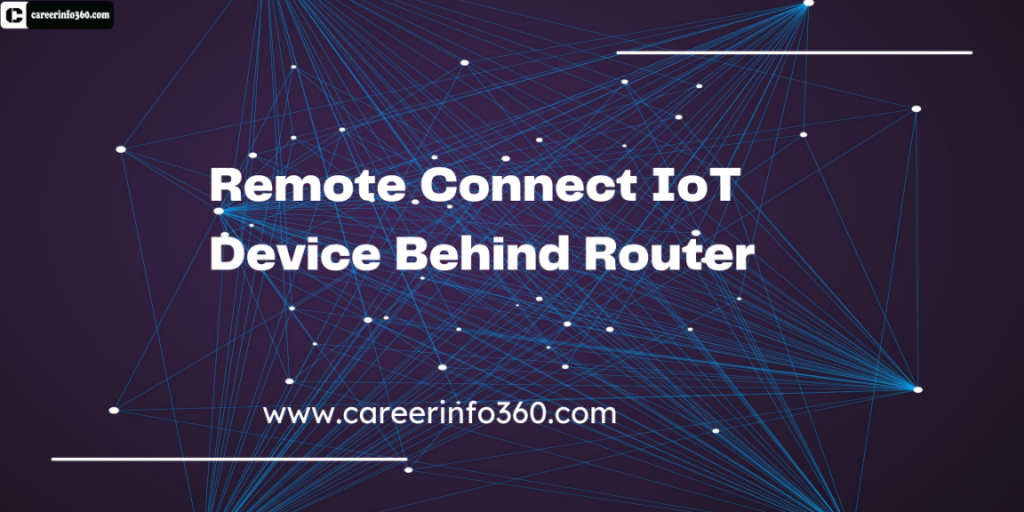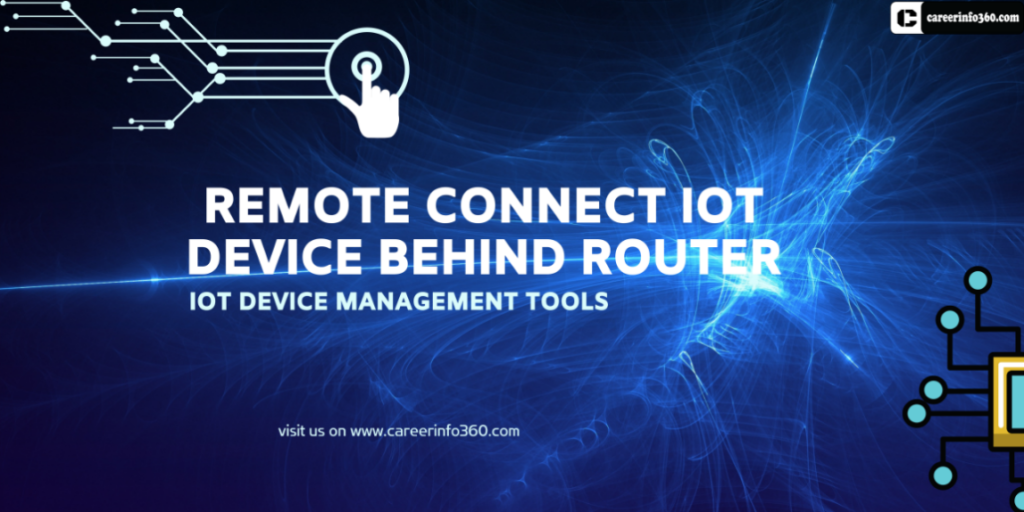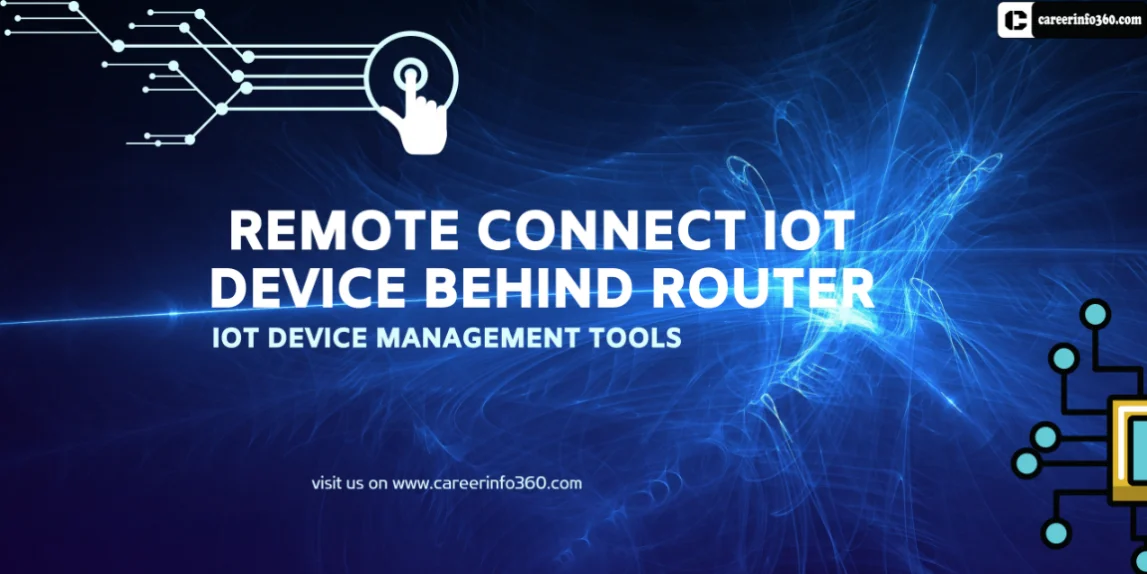Remote Connect IoT Device behind Router:
Often to unleash the true potential of your IoT device you need remote access even if it’s behind your home router. For anyone keen on the IoT, and Remote Connect IoT Device behind Router this is a real game changer of a skill.

You can do this through port forwarding or tunnel to have remote access. By using DDNS (Dynamic DNS), you can associate a domain name with the always-changing IP address of your router, thus making it easier to connect from afar. To enhance the safety you can even establish a VPN(Virtual Personal Network) in order to generate secure and confidential connection between your IoT devices.
Having remote connectivity means you can control your IoT devices wherever you are more comfortable & flexible. Home security? Smart appliances? Remote access takes your tech life to 10!
What are Two Major Concerns regarding IoT Devices Select Two:
As we discuss the Internet of Things (IoT), it is important to recognize the key concerns surrounding this rapidly expanding technology. Two of these concerns stand out:
1. Security: A major concern of IoT devices is their vulnerability to cyber threats. As more devices are connected to each other, it creates a broader attack surface for hackers. Weak passwords, unpatched firmware, and inadequate encryption can expose sensitive data and compromise personal privacy. Protecting IoT devices with strong security measures, regular updates, and strong passwords is key.
- Privacy: With IoT devices constantly collecting data, privacy concerns are growing. Devices such as smart speakers and cameras can compromise personal privacy if not properly managed. Users need to understand how these devices collect, store, and use their data and they need to have clear control over their data-sharing process.
What Ports do IoT Devices Use:
In the world of IoT, knowing what ports your devices are using is important for connectivity. Here is a quick guide:
- Common Ports: IoT devices typically use standard ports such as HTTP (80) and HTTPS (443) for web communication.
2. MQTT Port: MQTT, a popular IoT protocol, uses port 1883 for insecure users and 8883 for encrypted connections.
3. CoAP Port: CoAP devices communicate through port 5683, designed for low-cost IoT devices.
4.Device-Specific Ports: Some IoT devices have custom ports, which are often listed in user manuals or settings.
Understanding these ports helps configure your network, ensuring secure and secure IoT connections. Keep them in mind for a smooth IoT experience!
Access IoT Device Behind Nat:
The (IoT) has changed our lives by connecting smart devices. But what happens when you need to have an IoT device hidden behind a NAT (Network Address Translation) firewall? Let’s demystify this challenge.
Continuing NAT to enable IoT:
1. Port Forwarding: Configure your router to forward a specific external port to your IoT device’s internal IP address. This provides a long-range approach.
2. VPN (Virtual Private Network): Set up a VPN connection on your home network, allowing secure access to IoT devices as if you were right at home.
3.Cloud-based services: Use IoT platforms and cloud services that act as intermediaries, and provide remote device access without a complex router configuration
4. Dynamic DNS (DDNS)**: Make remote connections easier, by using DDNS services to assign domain names to your changing home IP address.
IoT Device Management App:
This new app simplifies management and control of your IoT devices. Here’s why it’s a game-changer:
1. Centralized Control: Manage multiple devices from one user-friendly interface. Change settings, check status, and update firmware effortlessly.
2. Real-Time Insights: Stay up-to-date with real-time data, ensuring your devices are running smoothly and efficiently.
3. Security: Increase device security by easily monitoring and monitoring access and security updates.
4. Automation: Create custom automation rules to optimize machine performance and save energy.
- Remote Access: Access and control your devices from anywhere, providing convenience and peace of mind.
In conclusion, the IoT Device Management App empowers users to unleash the full potential of their IoT ecosystem. It simplifies device management, enhances security, and elevates the overall IoT experience. Stay connected and in control in this indispensable tool in the IoT era.

IoT Device Management Tools:
These tools act as the central command center of your IoT ecosystem, and offer a range of benefits:
1. Smoothed Control: Effortlessly manage multiple devices from a single interface, simplifying daily tasks and device interactions.
- Remote Access: Have the ability to monitor and manage your devices from anywhere, ensuring convenience and peace of mind.
- Security: Enhance device security by controlling access, using other sensitive information, and protecting your data and privacy.
4.Performance Optimization: Fine-tune machine design, automate tasks, and monitor real-time data for efficiency and energy efficiency.
5.Simplified troubleshooting: Identify and resolve problems to reduce downtime and frustration.
IoT device management tools are the key to unlocking the full potential of your IoT ecosystem. They humanize the IoT experience, making it accessible and manageable for users from all backgrounds. Embrace these tools to stay connected, secure and in control in the IoT era.
IoT Device Management Companies:
In the vast world of IoT (Internet of Things), managing connected devices is of utmost importance. Here are the top IoT device management companies:
1. Cisco IoT Control Center: Known for robust security and device analytics.
2. BM Watson IoT: Uses AI and analytics for device management and predictive maintenance.
3. Microsoft Azure IoT: Provides cloud-based provisioning, monitoring and updating.
4. Google Cloud IoT Core: Excellent scalability and data analytics.
5. AWS IoT: Provides edge computing, security, and seamless integration.
These companies are streamlining IoT applications, and improving device management, security, and data processing. Whether you’re a homeowner or business owner, they ensure your devices stay connected, secure, and easy to manage in the IoT era.
IoT Device Remote Restart | Remote Connect IoT Device behind Router:
In the realm of IoT (Internet of Things), keeping smart devices running seamlessly is paramount. In the event of a fault or response, a remote power restart of an IoT device comes to the rescue.
- Instant Troubleshooting: Remote restart is your quick-fix solution for minor hiccups, connectivity issues, or failed IoT devices.
2. Minimize Downtime: Downtime can be significant in critical business processes or applications. Remote restarts get your devices back on track faster, minimizing the problem.
3. Enhances user experience: For home users, remote resume means uninterrupted entertainment and a hassle-free smart home experience.
4. Reduce frustration: No more fussing with wires or buttons. Remote restarts put control at your fingertips, simplifying troubleshooting.
Remotely restarting an IoT device is your secret weapon to maintain a simple and connected life. With just a few clicks or clicks, you can address details and have uninterrupted IoT smoothness.
IoT Device Remote Update:
Keeping our smart devices up to date is the important thing in the lot world and it has many advantages also such as remote update is very beneficial. first thing you have to do is to remove physical update of your device. Make your device work on latest update. Remote devices make security of your device strong and protect it from the threats. This update improves bug fixes, performance, user experience and increase the energy efficiency ,and at some extend reduces the costs. Is makes simple for you to humize the lot experience and make it secure for future use. This will provide you to connect with powerful and amazing tools.
Learn How To Get Job In IOT Click Here



[…] And learn more about IOT from here […]